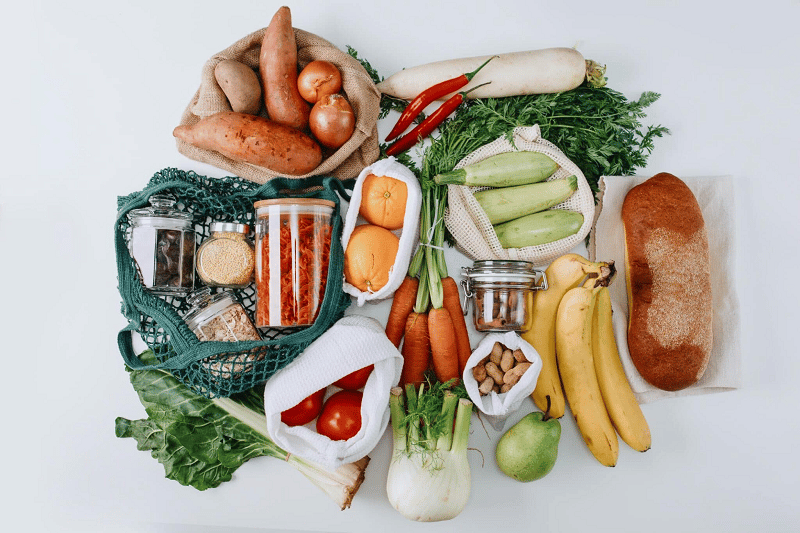Processed food is any food item that has been canned, cooked, frozen, pasteurized, or packaged.
You can enjoy many processed foods, including canned vegetables, frozen fruits, and pasteurized dairy products, as part of a healthy diet. However, some highly processed items are loaded with salt, sugar, additives, and preservatives, which can harm your health.
Reducing your intake of these highly processed foods is one of the most effective ways to improve your health and enhance the quality of your diet.
In fact, when people ask me for nutritional advice, cutting down on processed foods is one of the first things I recommend.
Here are simple, sustainable, and realistic strategies to help you eat less processed food.
Keep healthy snacks on hand
If you’re running short on time, grabbing a packaged snack on your way out the door may be tempting.
However, keeping your kitchen stocked with plenty of portable, nutritious snacks can make it much easier to make healthy choices on the go.
Some of my favorite healthy snacks include fresh fruit, mixed nuts, edamame, and veggies with hummus.
If you have extra time, you can also prep some simple snacks in advance. Hard-boiled eggs, turkey roll-ups, homemade kale chips, and overnight oats are a few great treats that you can whip up quickly and keep on hand for later.
Swap refined grains for whole grains
One of the simplest ways to reduce your intake of processed foods is to start trading them for healthier whole foods.
In particular, you can swap refined grains like white pasta, rice, bread, and tortillas for whole grain alternatives, such as brown rice and whole grain pasta, bread, and tortillas.
Not only are whole grains higher in important nutrients like fiber, but they’ve also been shown to protect against conditions like heart disease, diabetes, and certain types of cancer.
Get creative in the kitchen
If you’re feeling adventurous, give your favorite processed foods a healthy twist by recreating them in your kitchen. This gives you complete control of what you’re putting on your plate while letting you experiment with interesting new ingredients.
For example, you can make veggie chips by tossing potato, zucchini, turnip, or carrot slices with a bit of olive oil and salt, then baking them until they’re crispy.
Other healthy alternatives to processed foods that you can whip up at home include chia pudding, air-popped popcorn, granola bars, and fruit leather.
Personally, I love trying to recreate meals from my favorite restaurants at home instead of ordering takeout. In addition to saving money, this makes it easier to eat more whole foods by loading up on ingredients like fruits, veggies, nuts, seeds, and legumes.
Drink more water
Sugary beverages like soda, sweet tea, fruit juice, and sports drinks are high in sugar and calories but low in essential nutrients.
Gradually trading these drinks for water throughout the day is a great way to cut back on your intake of processed foods and improve your overall diet quality.
Sparkling or flavored water are two great options if plain water isn’t your favorite beverage. Alternatively, you can try infusing water with fresh fruit or herbs for an added burst of flavor.
Try meal prepping
Preparing meals in large batches once or twice each week ensures that you have plenty of nutritious meals ready in your fridge even when you’re too busy to cook.
It can also make it much less tempting to hit the drive-through on your way home or turn to frozen convenience meals when you’re pressed for time.
To get started, pick a few recipes to make each week and set aside a specific time to prepare your meals.
I also prefer finding a few recipes that share similar ingredients so that I can rotate through several meals during the week to avoid repetition.
Eat more vegetables
When you’re preparing meals at home, include at least one serving of vegetables to increase your intake of healthy, unprocessed foods.
This can be as easy as adding spinach to your scrambled eggs, sautéing broccoli for a simple side dish, or tossing carrots or cauliflower into soups or casseroles.
Vegetables are highly nutritious and great sources of fiber, which keeps you feeling full between meals to help decrease your appetite and curb cravings.
Eat less processed meat
Processed meats like bacon, sausage, lunch meat, and hot dogs are associated with several downsides and even classified as carcinogenic by the International Agency for Research on Cancer (4).
You’ll be glad to hear that there are plenty of easy ways to cut back on processed meat.
For starters, you can simply swap these foods for less processed varieties of meat, such as fresh chicken, salmon, or turkey. You can also replace packaged lunch meats with other sandwich fillings, including tuna salad, chicken breast, or hard-boiled eggs.
Alternatively, you can eat more plant-based proteins, such as beans, lentils, tofu, or tempeh.
Processed foods are any food that has been cooked, canned, frozen, or packaged.
Although you can eat numerous processed foods as part of a healthy diet, you should limit those that are high in sodium, sugar, additives, and preservatives.
Try a few of the tips outlined in this article to find what works for you, and remember to make changes slowly for the best results.


